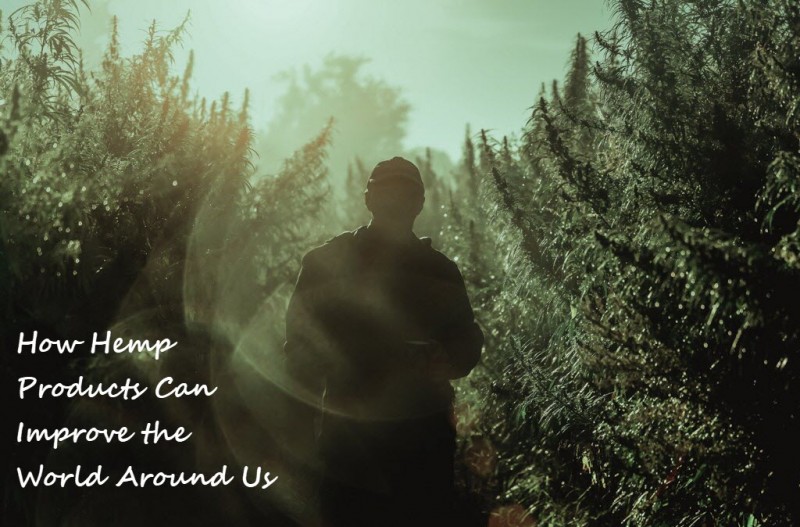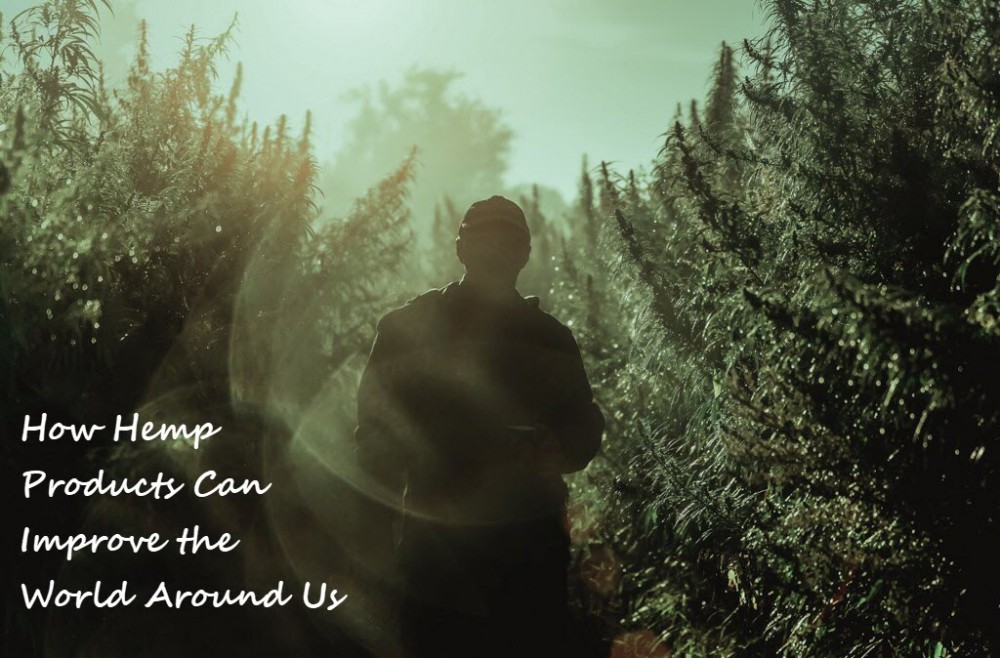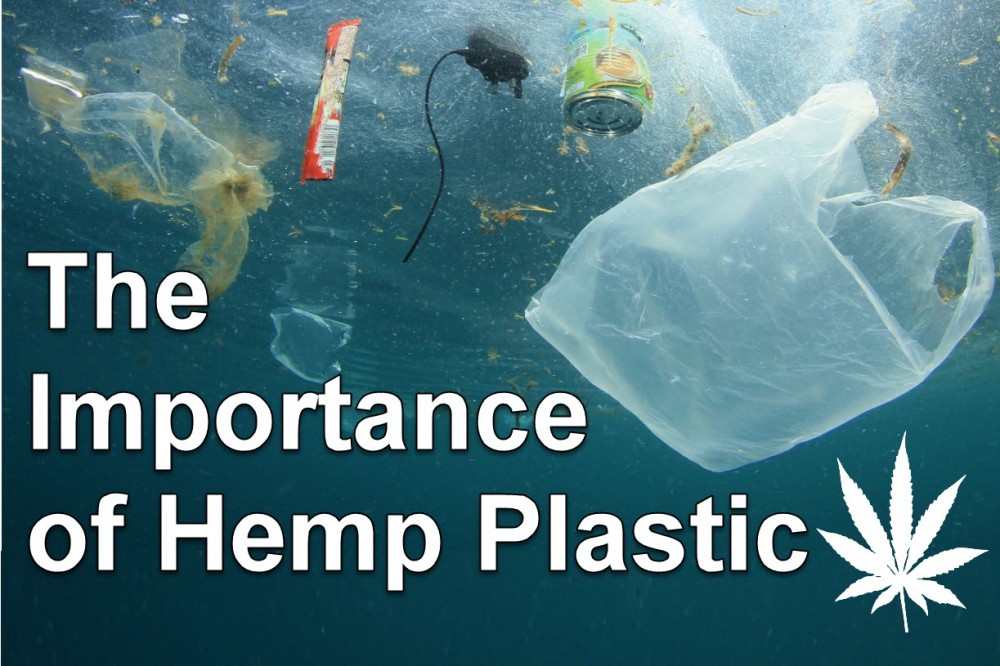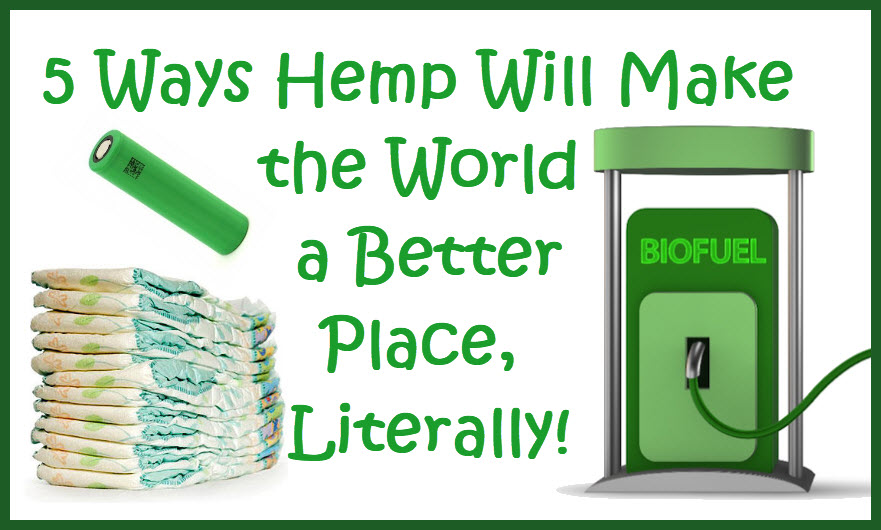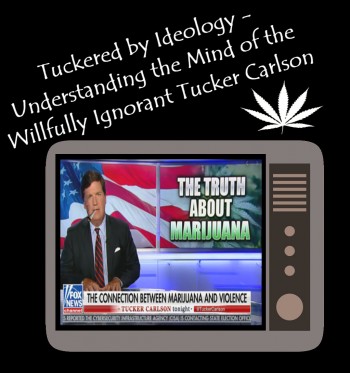How To Improve The World With Hemp
The Role It Could Play
Often the plant Cannabis Sativa is perceived as a herb for ‘stoners’ but that couldn’t be further from the truth. You may have heard of Hemp, which is commonly used for Cannabis Sativa strains with low to no traces of THC. Hemp has at least over 25,000 documented uses, from health food supplements, including CBD, to biodegradable hemp plastic, paper, bio-fuel, clothing and construction materials.
With all of these functions, it comes as no surprise that Hemp is being looked at as a more sustainable and organic source for a variety of industries. So can this humble weed (pardon the pun) really help us save our planet and lead to a greener future?
Clothing The World With Hemp
Hemp fibers are strong, durable, soften over time and wear fare better than common clothing materials today. However, due to the criminalization of the cannabis plant, Hemp was also banned and therefore we were forced to replace with cotton & later man-made synthetic fabrics.
To date, cotton account for roughly 30% of fabric and because cotton comes from a plant, its easy to think that it would be eco-friendly. Sadly though, cotton has a much higher environmental cost as it requires huge amounts of space but more importantly water to grow. It uses a whopping 20,000 litres of water to produce 1kg of cotton. Compared to Hemp that uses a mere fraction of water along with being much more resilient to pesticides.
A Environment Justice Foundation suggested that cotton uses 2.5% of the world land yet uses 16% of the worlds insecticides. There is very little organic cotton growing around the world with most commercial cotton seeds being genetically engineered due to the plant’s inability to deal with pests.
Shockingly most other fabrics are made from synthetic fibres, which account for 60%. Fabrics made from Nylon, polyester and acrylic come from petroleum, a fossil fuel. Petroleum-derived materials are not biodegradable meaning they are hard to dispose of after use. Furthermore, they contain harmful Microplastics which, get released when synthetic textiles are washed.
Microplastics are know for their effects on wildlife and the eco-system with studies suggesting that sythetic, petroleum derived clothes contributing approximately 35% of the primary Microplastics in the world’s oceans. By reducing man-made textiles and cotton, with Hemp we could make a massive and simple step forward towards clothing the world in a more eco-friendly and sustainable way.
Hemp & Saving The Trees
The 2018 report on climate change suggested that roughly 64 million acres of forest were being destroyed across the globe every single year. Thats a lot of one of our most precious and required natural resources readily declining.
Thats just human behaviour, as when you factor in natural events like the devastating forest fires for example the 2019 Australia forest fire, on top of the annual deforestation figures, you quickly realise that more needs to get done, solutions need to be not only brought to the table but implemented fast!
At a young age we were all taught how crucial and importantly the forests and trees are to us a a planet. Amazon is refereed too as the ‘lungs of the earth’. So imagine if your lungs, were oder such attack. How quickly would you want to act? Not only do the trees help produce the oxygen we breathe, but they help clean carbon dioxide from the air and create a rich habitat for the wildlife and eco-system. Sadly, one of the main reason for cutting down trees is to meet the consumer demand for things like palm oil in food products, timber materials and paper. Despite more advancements into the digital age, the production of paper to this day continues to grow with devastating consequences.
You don’t have to do much digging to find that humans have had a long history and relationship with Hemp, in fact, evidence suggests that we have been using Hemp for crops and fibres going back at least 10,000 years, making it one of the worlds oldest cultivated crops. The earliest example of hemps use is backdated to China dating back to around 150 BC. Hemp is just an excellent source but produces high quality paper due to is higher cellulose and lower lignin content, making a thinner and durable product compared to wood.
It was hugely popular until the anti-marijuana laws of the 1930’s were brought out. For more information and the history on this, please check out www.kokora.co.uk.
Times are changing and Hemp, and its benefits, are resurfacing. For paper, Hemp is a much more eco-friendly and sustainable source than tress as it can be produced faster, a lot faster! It takes around 20-50 years to grow trees to where they can produce suitable paper, where as Hemp it takes around 4 months. That switch would ave millions of trees each year.
Cleaning Up Our Act With Hemp
In addition to helping save our trees, Hemp literally cleans up the earth. Hemp contains excellent phytoremediation properties - straight away its what on earth does that mean? This means it is like a sponge and absorbs harmful chemicals, toxins and heavy metals from the soil. It also does what trees are known for and helps remove carbon dioxide from the air.
Now Hemp is being used by farmers across the world to regenerate fields that have been effected and depleted of nutrients, making in a great source for crop rotation.
Case Study - Chernobyl
If you look at the environmental disaster that was the Chernobyl nuclear power station in 1986, due to high levels of radiation, roughly 1000 square miles were deemed uninhabitable for 100 years+. During the 1990’s, scientists teamed up and were successful in using Hemp to remove heavy metals and Dioxins from this contaminated soil near Chernobyl including Lead, Cadmium and Nickel, a group of toxic chemical compounds known to cause cancer and damage our immune system.
Planet Repair
Coupling this with the CO2 extraction previously mentioned (with numerous industrial hemp strains are able to absorb between 16- 22 tonnes of CO2 from the air per hectare planted) these factors put Hemp at the forefront of a potential leader in helping reduce climate change i.e. the greenhouse effect - through carbon sequestration (the long-term storage of carbon dioxide from the atmosphere).
This is to the point where it would help to reverse some of the damage caused and help maintain a level of planet homeostasis. We have seen the planet already begin to heal itself with us now staying indoors & travelling less.
Building For The Future With Hemp
Its relatively safe to say that a good majority of the construction industries are not known for being particularly environmentally friendly. There is a huge demand for natural and more sustainable building materials and again, Hemp comes to the forefront here.
Hempcrete
With its hurds and fibres and mixed with lime, produces Hempcrete, a more eco-friendly, sustainable and more efficient for insulations version of concrete. Thats not all! It can also make roofing tiles, bricks, insulations, fibreboard making hugely versatile.
Hempcrete use is growing rapidly and has been utilised in countries like France for years. It has excellent thermal insulation properties making it a breathable material, preventing condensation by being able to absorb up to 20% of its weight in moisture without deterioration.
A big advocate of hemp in construction is Grand Design’s Kevin McCloud said “I can’t think of another building material to match hemp. It has a low environmental impact, locks carbon in, can be grown locally in just a few months and doesn’t require lots of cables and power tools leading for a safer worksite and cleaner build”.
Kokora | Who are we?
We are a health & wellbeing company specialising in Hemp infused products, including CBD oils, creams, vape-liquids and more coming! Check out our products here - https://www.kokora.co.uk/collections/hemp-products
For more information or would like to follow our journey, please check out our website and www.kokora.co.uk and feel free to get in touch.
HEMP IS HERE, READ MORE...
HEMP PLASTIC, WHY IT CAN HEAL THE EARTH TODAY!
OR..
5 HEMP PRODUCTS THAT CAN SAVE THE PLANET, READ THIS.

